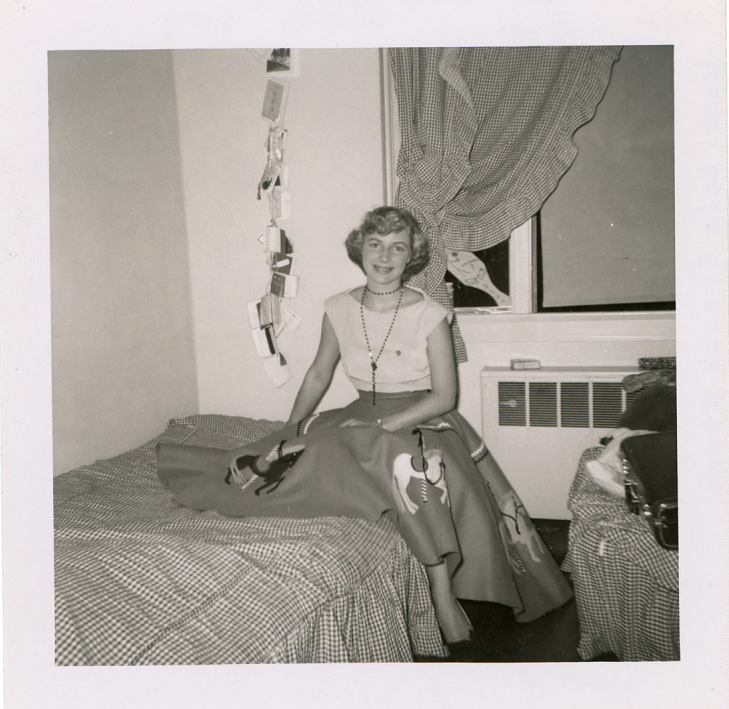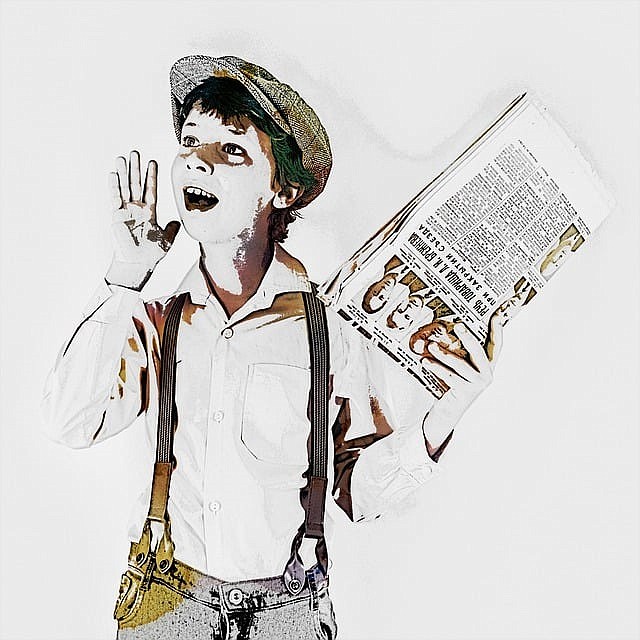“The paper boy rides his bicycle no matter what the weather and does this before school. Imagine if he had to pedal from the sidewalk up to each house.” My mother was cutting an orange to hand-squeeze into juice.
“Well, he gets your weekly tip no matter what!” I addressed my mother as I placed the damp pages on a towel and then on a kitchen counter to dry. I knew she appreciated the carrier’s effort and the convenience having the paper delivered daily and wouldn’t respond to my remark.
Outdoor stalls sold papers and periodicals for those without home distribution. Local, national, a job-hiring publication for theatre people, scandal oriented, business emphasis.... at the cost of a nickel a day, a community or ‘world’ was at one’s fingertips—often along with black inky deposits on digits. The newsstand was as much a part of life as public phone booths. Candy and cigarettes sales encouraged people of any age to comfortably shop.
Want Ads were circled by those looking for possible employment; sports stories, wedding announcements, theatre reviews, crossword puzzles, global and/or local news, readers’ comments, editors’ opinions… it all gave us connections. Television had not yet been developed for home use.
On public transportation, I actually classified riders by the newspaper they carried. Since dress codes required men to be in suits, ties, felt hats with grosgrain ribbon trim, leather shoes, socks, and overcoats in cold weather, the newspaper seemed to be an accessory. Hm. Business? Actor looking for work? One passing time with a tabloid scandal or movie stars’ lives? Educated, as the paper's name is associated with erudite readers? Interested in only his local community? Personable as he’s smiling with his favorite comics characters? I was so certain my judgments were accurate.
I took just one class of my high school students to a real newspaper plant. From the 140 I taught each day, the principal allowed only the group that entered before lunch, in case we were delayed it wouldn’t affect classes. The pupils saw people—called typesetters—using brass alphabet letters and literally spelling out what was to be copied from that to physical paper. These setters injected melted lead into a mold and formed a ‘plate’. The noise from large rollers turning typeset into the print, the bundling of assembled items waiting to be loaded on trucks for delivery, fascinated me as well. Television was in its toddler stage and a daily edition was important. Next class, with those selected students, was also an opportunity to discuss the dignity of labor whether it’s a typesetter, a trash collector, a physician, or a senator. A few giggled when I mentioned the school’s janitor was not less important than the principal. My parents’ teaching was coming out of my lips, triggered by a visit to see how blank white paper becomes a readable daily edition. I also thought of that long-ago paper boy pedaling along the sidewalk in the rain and throwing the folded item... trying for the front door landing in the bushes; he had a work ethic.
My college teaching was before computers; students got most ‘news’ they wanted via television by then. A ‘paper boy’ still existed but was often an adult who drove a car and, through an open auto’s window, tossed the item on a driveway. The Sunday edition had risen to fifty cents; payment was mailed with a fifteen cent first-class postage stamp.
Papers were common for vendors to wrap customers’ raw fish at markets. And crumbled up pages helped ignite kindling atop wood logs on a fireplace. Inky smudges were part of life. When I entered college and the Dean of Women gave her annual ‘proper lady lecture’, she said coeds should carry a newspaper and if ever we were to sit on a boy’s lap we were to put the newspaper on his thighs before we sat down; it should be a barrier.
2023. My orange juice comes from a carton that gets recycled when empty. Important (or unimportant) news is available online at all times, as are employment opportunities. Television has constant information with broadcasters standing in the middle of hurricanes to show the terrible wind and rain conditions, or in a war zone reporting on destruction. The stock exchange data in a national daily is ‘old news’ as the tangible paper comes a day later; anyone who needs instant and accurate information would tap and his/her monitor would light up with current numbers. Yet the item held in hands when read, not on a tablet’s screen, pointing out the Arts, Sports, National and International, Obituaries, Comics, Crosswords, Horoscope, Local, Dining, and so forth, has not vanished. Op-Eds and Letters-to-the-Editors exist, photos often in color... even though the type is ‘set’ by a computer, some of us still want news by turning a real page.
 Lois in 1954
Lois in 1954




